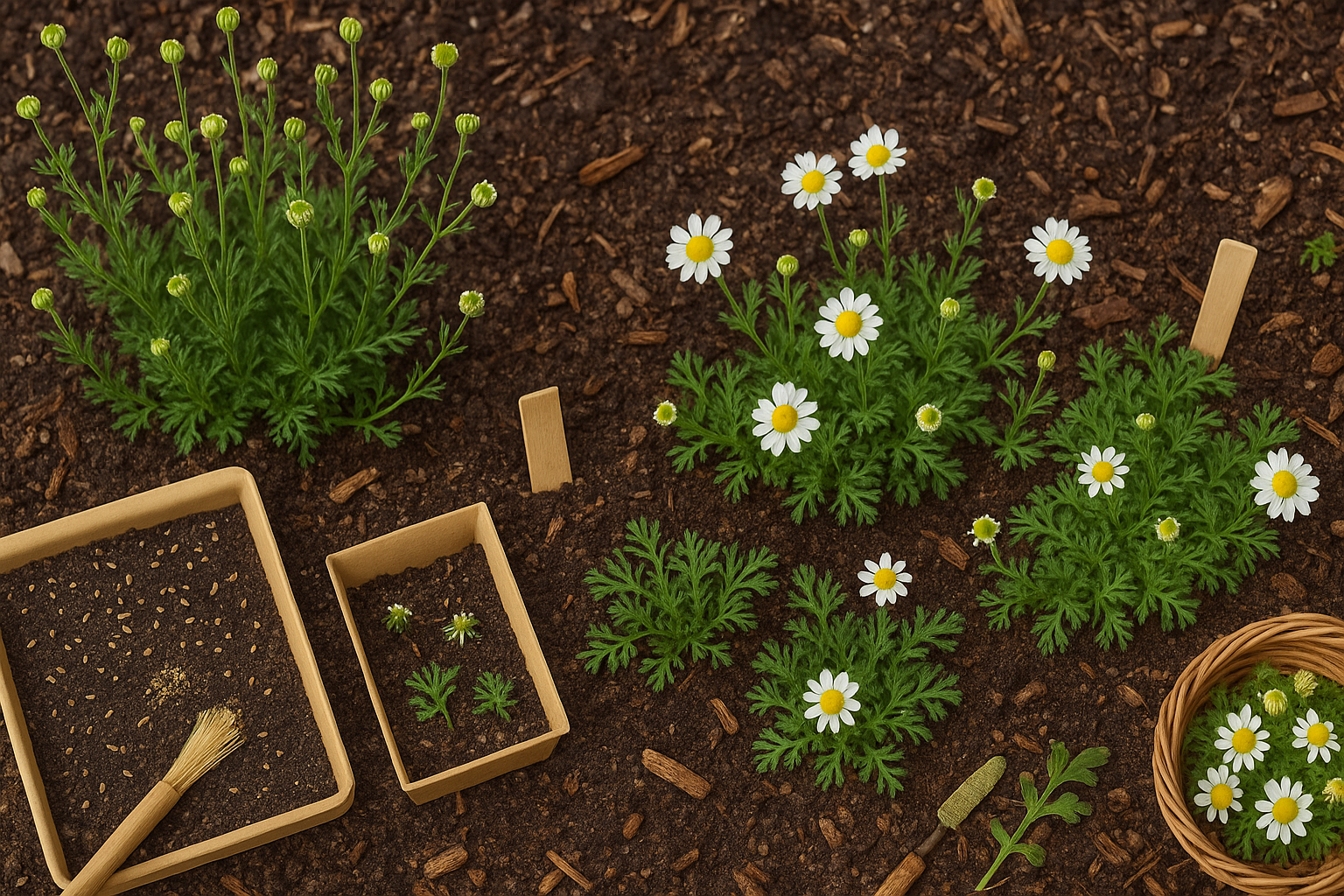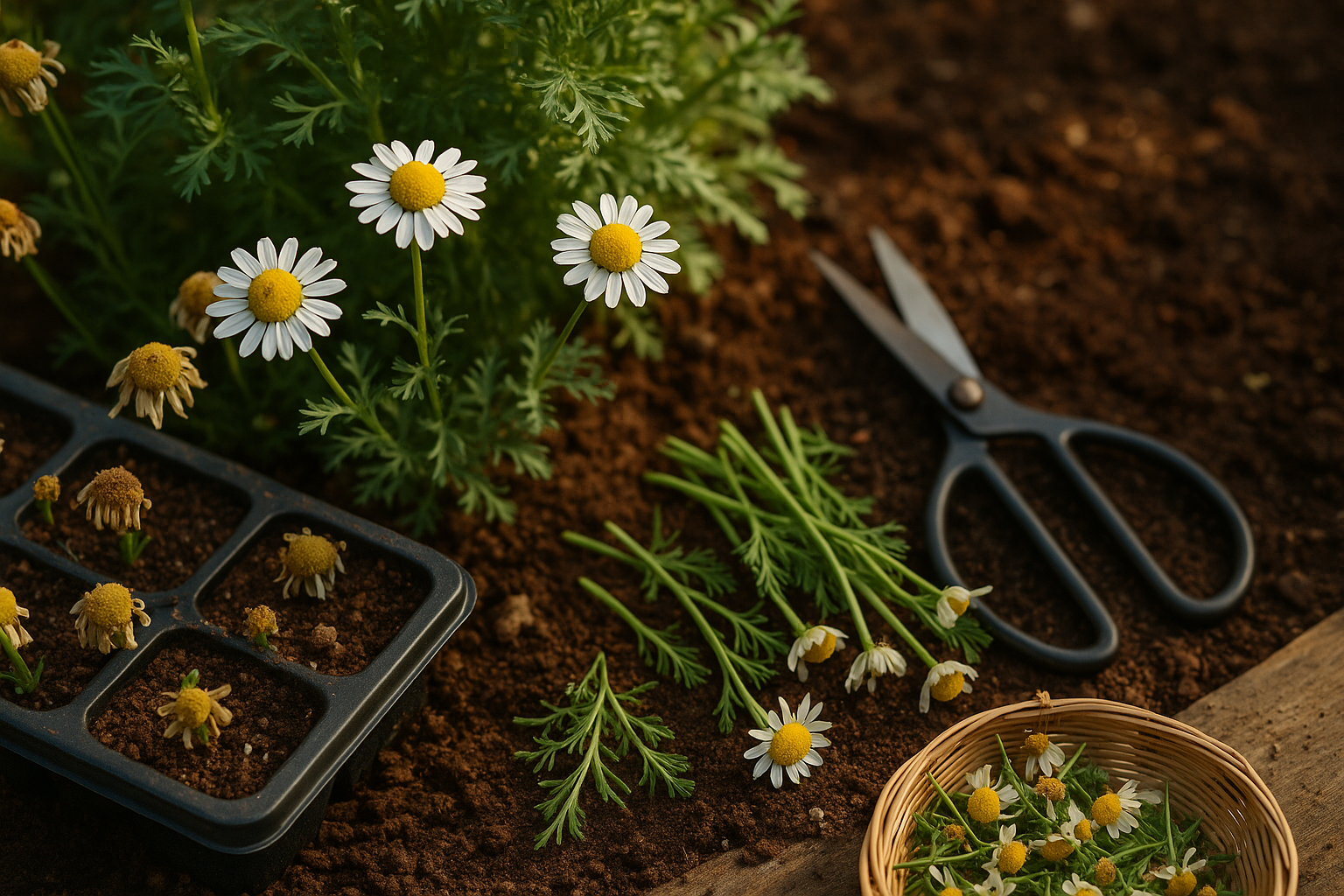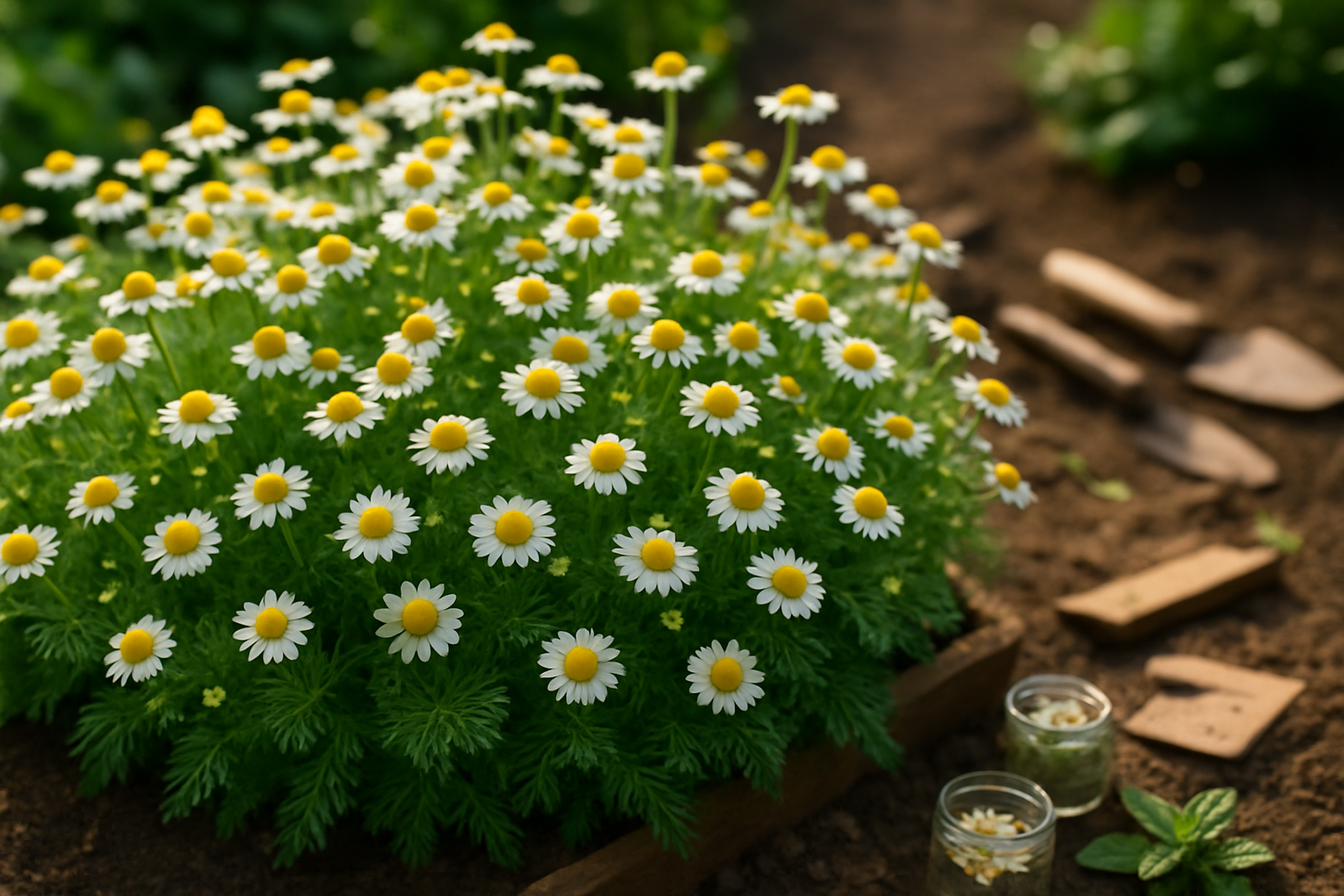Introduction
Pruning chamomile is a simple yet effective way to keep this beloved herb thriving in your garden. Chamomile, cherished for its delicate blooms and soothing effects in teas, is surprisingly low-maintenance—but a little care goes a long way. Regular pruning and deadheading aren’t just about tidying up; they are essential for encouraging your chamomile to produce more flowers and maintain dense, healthy growth. Without trimming, plants can become leggy and bloom less over time.
Fortunately, even new gardeners can quickly master the basics with a few practical tips. In this post, we’ll cover when to start pruning and deadheading chamomile, the best techniques for each task, and how to care for your plants afterward to keep your harvest thriving. Whether you’re growing chamomile in pots or garden beds, these easy steps will help you enjoy a fuller, longer-lasting display of blooms all season long.
Understanding Chamomile Growth and Bloom Cycle

Chamomile is cherished for its delicate flowers and soothing properties, but understanding its growth cycle is key to a thriving garden. There are two main types: German chamomile (Matricaria chamomilla), which is an annual completing its life cycle in one season, and Roman chamomile (Chamaemelum nobile), a perennial that returns year after year.
Both types start as seeds. After germination, they develop feathery, aromatic leaves. As the plants mature, their stems elongate and small buds form. Flowering usually begins in early summer, triggered by warmer temperatures and longer daylight hours.
Once the iconic daisy-like blooms appear, regular harvesting or deadheading (removing spent flowers) encourages German chamomile to produce more blooms until the end of its growing season. Roman chamomile, being a perennial, benefits from occasional trimming to maintain bushiness and vigor but tends to flower more sporadically throughout the summer.
German chamomile typically grows upright, making it ideal for repeated flower harvests. Roman chamomile has a low-growing, mat-forming habit and is often used as a fragrant ground cover.
Care Tips for Chamomile
- Plant seeds in well-drained soil and a sunny location.
- Water moderately to avoid overwatering.
- Prune German chamomile after heavy blooming to stimulate new growth.
- Give Roman chamomile a light trim after flowering to promote dense foliage and repeated blooms.
Recognizing these differences lets you tailor your care: keep annuals blooming with frequent picking, and help perennials stay healthy through seasonal shaping.
When and Why to Prune Chamomile

Knowing when and why to prune or deadhead chamomile can make a big difference in the appearance and productivity of your plants. The best time to prune chamomile is after its first major flush of blooms, typically in late spring or early summer, once about half the flowers have faded.
Look for visual cues like browning petals, dried flower heads, or stems that look stretched or floppy—these are signs the plant is shifting energy away from strong growth and vibrant blooms. Regular deadheading, which means snipping off spent flowers, tells the plant to direct its energy toward producing new buds, not seeds, leading to longer and more abundant flowering.
Pruning back straggly stems by a third after blooming also encourages bushier, more compact growth, preventing that unwanted “leggy” look. If you skip this step, chamomile can easily become thin, overgrown, and produce fewer flowers, as the plant spends its resources supporting old or seed-forming stems rather than fresh ones. Plus, neglected plants can develop poor air circulation, making them more prone to pests and diseases.
To keep your chamomile lush, try using clean scissors to trim faded blooms every week or so, especially during peak flowering—this simple routine can result in fuller, healthier plants and continuous harvests. Whether you grow German or Roman chamomile, remember that a few minutes spent pruning will reward you with brighter, denser patches of daisy-like flowers all season long.
If harvesting flowers for tea or crafts, pick them just as the petals start to flatten for the best flavor and effect, combining harvesting and pruning in one easy step.
Pruning vs. Deadheading
Pruning and deadheading are two essential yet distinct techniques in chamomile care that keep your plant healthy and productive. Deadheading involves snipping off spent blooms to encourage continual flowering and prevent the plant from going to seed too early. Use sharp, sterilized scissors or fine garden snips for this—simply cut the flower stem just above a set of healthy leaves or a new bud, removing only the faded flower heads.
Pruning, on the other hand, means trimming back stems and foliage, usually by one-third, to shape the plant, boost airflow, and remove dead or damaged growth.
For both tasks, always clean your tools before and after use with rubbing alcohol or a diluted bleach solution to prevent disease spread. Start by visually inspecting your chamomile; for deadheading, focus on brown or drooping flowers, and for pruning, look for overgrown or unhealthy stems.
Hold the plant steady, make clean, angled cuts, and avoid tearing or crushing the stems, which invites infection. Don’t cut more than a third of the plant at once, as over-pruning can stress chamomile and reduce its resilience.
A common mistake is deadheading too close to the base, which can damage latent buds, or pruning too aggressively, which hampers regrowth. Always wear gloves to protect your hands from minor cuts, and sanitize between plants if you’re working in a group to reduce cross-contamination.
Prioritize healthy, gradual maintenance by deadheading weekly during the growing season and pruning only as needed to keep the plant bushy and vigorous. This ensures a vibrant, disease-resistant chamomile patch all season long.
Post-Pruning & Deadheading Care
After you’ve pruned or deadheaded your plants, giving them the right care will set the stage for healthy regrowth and even a second blooming cycle. Start by thoroughly watering the area; pruning can temporarily stress your plants, and fresh hydration helps roots recover and push out new shoots. It’s important to avoid overwatering—just keep the soil evenly moist.
Next, give your plants a light feeding with a balanced, diluted fertilizer to supply the nutrients they need for vigorous regrowth. If you’re working with flowering plants, a bloom booster with extra phosphorus can encourage more blossoms.
Be sure to monitor your plants daily for signs of stress, such as wilting, yellowed leaves, or a lack of new growth. Mild stress is normal after pruning, but if you notice continued wilting or browning, check that your watering is appropriate and the soil drains well—soggy roots lead to rot.
Look carefully for signs of disease like powdery mildew or blackened stems, especially in humid weather. If any issues appear, remove affected foliage promptly and consider applying an organic fungicide if needed.
For a boost in rapid regrowth, gently mulch around the plants to help retain soil moisture and moderate temperature swings, but keep mulch a couple of inches away from stems to prevent rot.
With attentive, gentle care and a watchful eye, your pruned plants will rebound quickly, rewarding you with lush growth and possibly a new flush of blooms within weeks.
Common Problems & Troubleshooting
When it comes to pruning and deadheading, gardeners often face a few common problems—fortunately, each has practical solutions. One major concern is the risk of spreading disease, which often happens when cutting with dirty tools or pruning while plants are wet. To prevent this, always clean your pruners with rubbing alcohol before each use, and avoid working right after rainfall.
Overpruning is another common issue, especially with flowering shrubs and young trees. Removing too much can lead to weak regrowth or even stunt the plant’s development. Follow the one-third rule: never remove more than a third of the plant at a time, and focus on dead, damaged, or crossing branches during routine trims.
Poor regrowth or lack of blooms can also result from pruning at the wrong time. Be sure to research the ideal season for each plant and wait for new growth to appear before pruning. If a plant is under stress from drought, heat, or active pest infestations, it’s best to delay or skip pruning altogether, as stressed plants are more vulnerable to shock and infections.
For example, if you notice signs of fungal disease or insect damage, treat the problem first with an appropriate fungicide or insecticidal soap. Once the plant recovers, carefully remove dead or damaged tissue.
By timing your pruning carefully and using clean, sharp tools, you’ll help keep your plants healthier and more resilient year-round.
Bonus Tips for a Blooming Chamomile Patch
To get the most blooms from your chamomile patch, start by choosing a sunny spot—chamomile thrives with at least six hours of direct sunlight daily. Well-drained, sandy or loamy soil with a slightly acidic to neutral pH is best, so consider mixing compost into your bed to boost fertility and drainage.
Water regularly, but don’t overdo it: the soil should stay moist but never soggy, as saturated roots can quickly lead to rot. When planting, give each chamomile plant about 8 to 12 inches of space so air can circulate and prevent mildew.
Consistent maintenance is key—deadhead faded blooms weekly to encourage fresh flowers, and lightly trim leggy stems to keep your patch tidy. If you’re lucky enough to have a bounty, put extra flowers to good use by drying them for homemade chamomile tea, which is soothing for both body and mind.
You can also incorporate dried blooms into craft projects like natural sachets, bath salts, or floral-infused oils, or try their gentle healing properties in DIY skin remedies such as calming ointments.
With regular care—like vigilant weeding, gentle watering, and timely harvesting—you’ll keep your chamomile patch blooming and ready for whatever creative uses inspire you throughout the growing season.
Conclusion
Proper pruning and deadheading are game-changers for your chamomile, leading to healthier plants and abundant, longer-lasting blooms. By snipping spent flowers and thinning out crowded stems, you help your chamomile focus its energy on producing fresh, vibrant blossoms. These simple techniques also prevent pests and disease, making your plant care routine easier in the long run.
Don’t hesitate to try these tips in your own garden—your chamomile will thank you with fuller growth and extended flowering. Have questions or want to share your experience? Drop a comment below; I’d love to hear how your chamomile is thriving!
